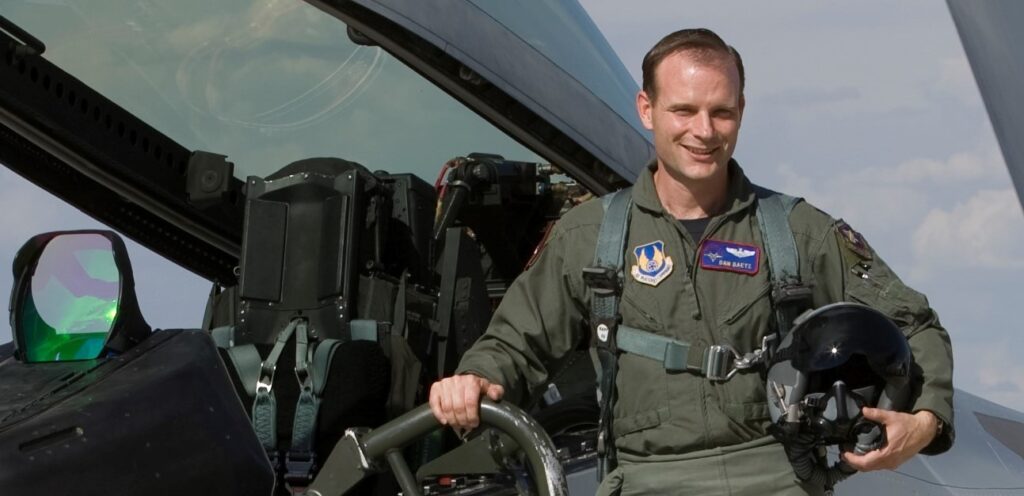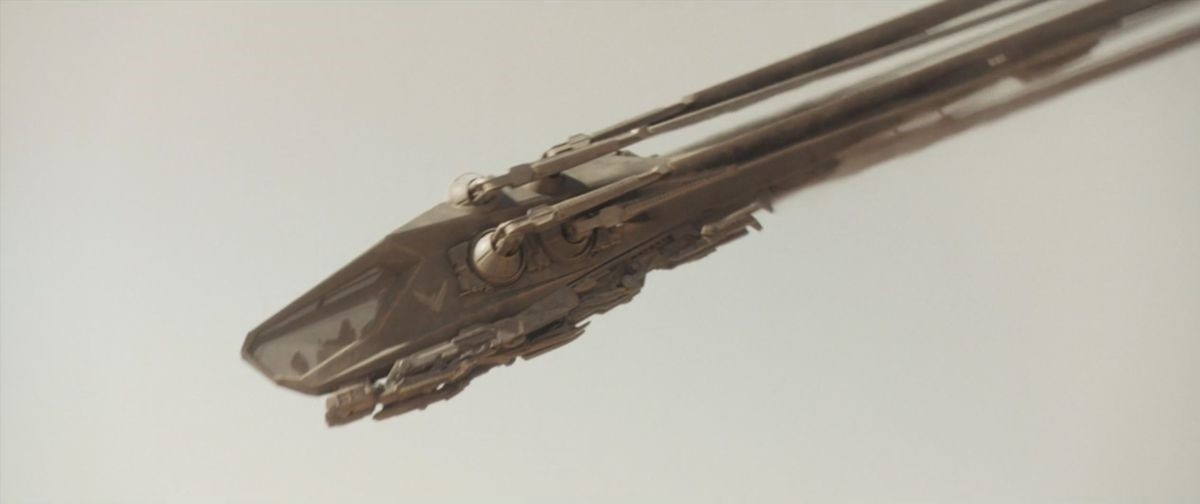In a previous post, I addressed whether the flying in Dune is realistic. In that installment, I specifically examined the design of the very cool ornithopters (or just ‘thopters to you true fans).
This time, I’ll use my experience as a fighter pilot and test pilot to look beyond the machines at some of the flying scenes themselves.
Let’s start with prepping for takeoff.
Those rear-entry ramps are slick, right? So much easier than climbing a ladder—and, believe me, metal cockpit ladders get hot in the sun. So on the oven of Arrakis, using a ramp is much more convenient (just don’t go barefooted, please…)
But I have one observation.
Watch the scenes in the movie when they crank engines on that desert land. The pilot is smart enough to close the front window panels first—but then he leaves the back ramp wide open. Hmmm… 🤔 Not great for keeping sand out of the crew compartment. Remind me to wear goggles and a mask…

Now let’s address the cockpit environment in flight.
It’s way too smooth. Way too quiet.
As someone who has been a pilot or passenger in several helicopter models, those spinning rotors induce significant vibration and noise. It’s a little like driving over a cobblestone road—with a few larger speedbumps along the way. Then add turbulence from the atmosphere—say, thermal currents rising from a desert landscape—and it’s a fun ride.
And ‘thopter blades literally beat the air into submission.
Thus, an ornithopter ride wouldn’t be a serene experience. It’s a noisy Jeep, not a posh Cadillac. Bodies would shake, heads would jiggle. There’d be no communication without noise-cancelling headsets.
Yeah, and those nuances of using the Voice? They’d get lost in the mechanical maelstrom.
But lest you think I’m just a critical curmudgeon, I have some positive things to say about the ‘thopter flying formations.

Dune usually shows them flying in staggered formations. They don’t just fly in a perfect line, one behind the other, which would cause them to fly through each other’s wake turbulence. This is one reason a staggered formation is smart.
Nor do they fly line abreast, but instead the wingmen are offset aft. This lends itself to flexible tactical maneuvering. In an environment where there is no real threat of an enemy aircraft sneaking up on you, there’s no need for a wingman to fly right alongside their leader (where the lead ‘thopter could clear their wingman’s six o’clock position).
Ah…but Harkonnen aircraft did sneak up on Paul (this is what happens when you have no wingman, Muad’Dib…). So Paul flew his ‘thopter into a huge Coriolis dust storm. How realistic was that scene?

Let’s accept the assumption that Paul’s ‘thopter would still hold (mostly) together amidst sandblasting from 700-kilometer-per-hour winds. The strong updrafts—not unlike a mega-thunderstorm—could certainly carry the craft upward, as the movie depicts.
But what the scene ignores is the impact on the bodies inside the ‘thopter. As it spins, Paul and his mother, Lady Jessica, just sit there.
In reality, they’d be thrown forward against their shoulder straps. How hard? Well, it depends on their precise RPM and distance from the rotation axis.
Here’s the equation with radial distance r in meters: g = rpm2 x r x 1.118×10-3
Estimating from the film at one revolution per second (or 60 RPM), even if Paul and Jessica sat only one meter from the rotation axis, they’d feel 4g toward the windscreen. Double that to 8g if their seats are two meters forward.
All I can say is…ouch!
Not all the physics were wrong in that sequence, though. Later, their hair floats upward properly as they plummet in a slow, free-falling corkscrew into the sand. And thank goodness they crashed into a sandbank that was as soft as yummy ice cream on a sunny, summer day.
Let’s just hope there are good chiropractors on Arrakis.
Now go get yourself some ice cream. Don’t be afraid of the calories. Fear is the mind-killer… 😉
And stay tuned for my next installment on Dune’s flying scenes.
Dan




4 responses to “Is the flying in Dune realistic? (Part Two)”
I did not see DUNE but Your view points were interesting!!!!
Thanks Thomas! The movies are worth a look. Beautiful production design and score.
This is just awesome! Hope all is well!
Thanks David! Great to hear from you!